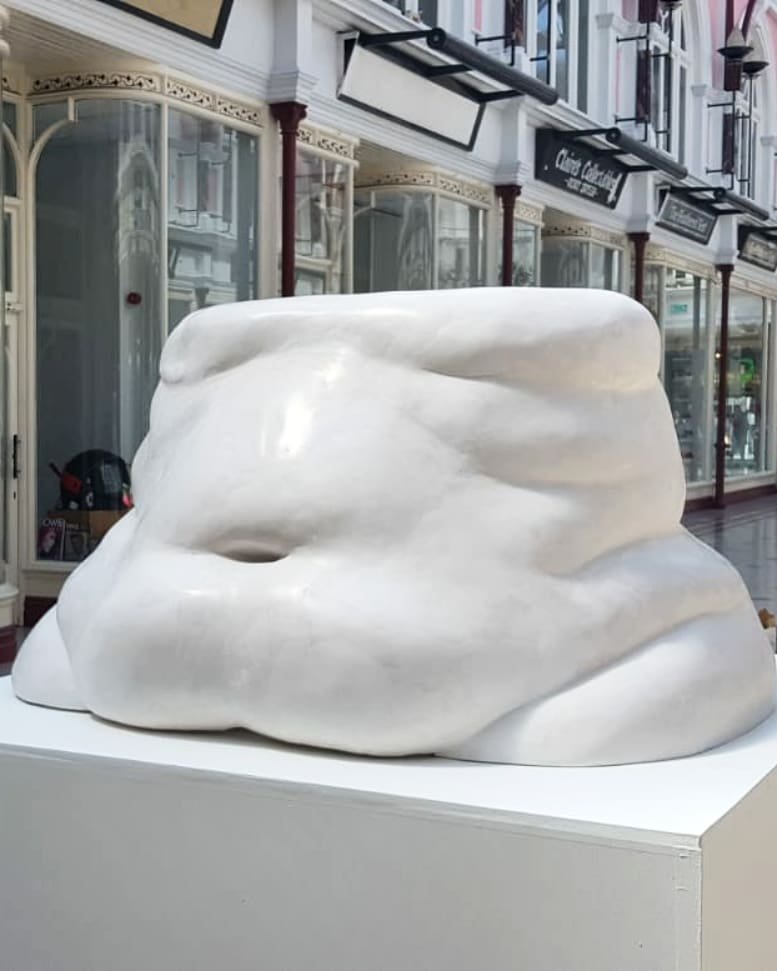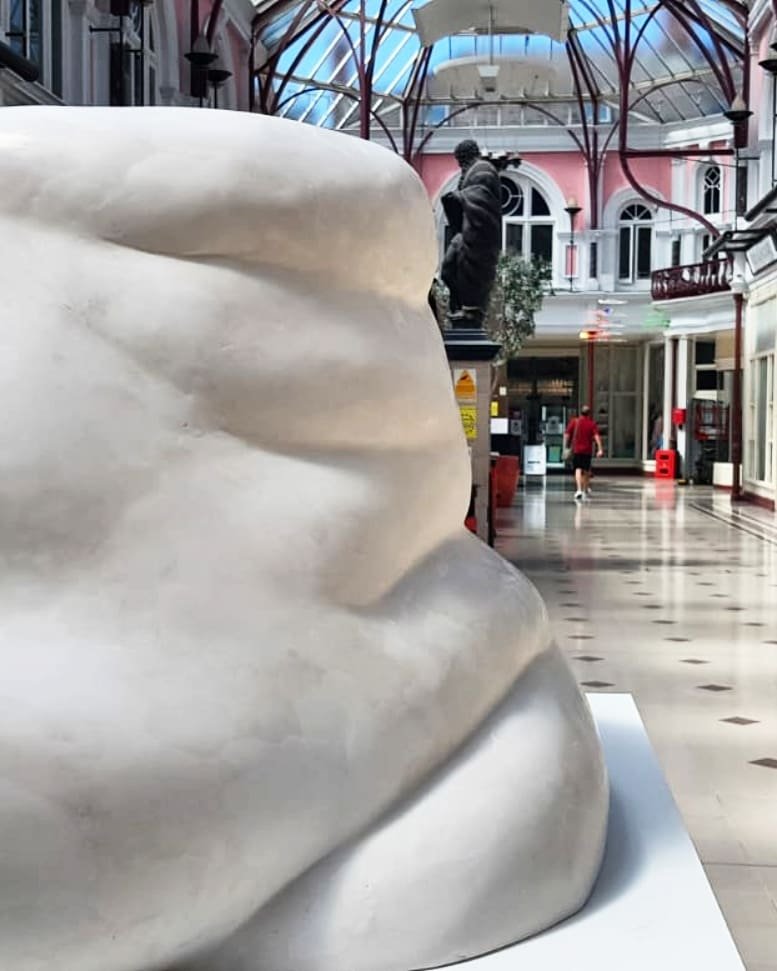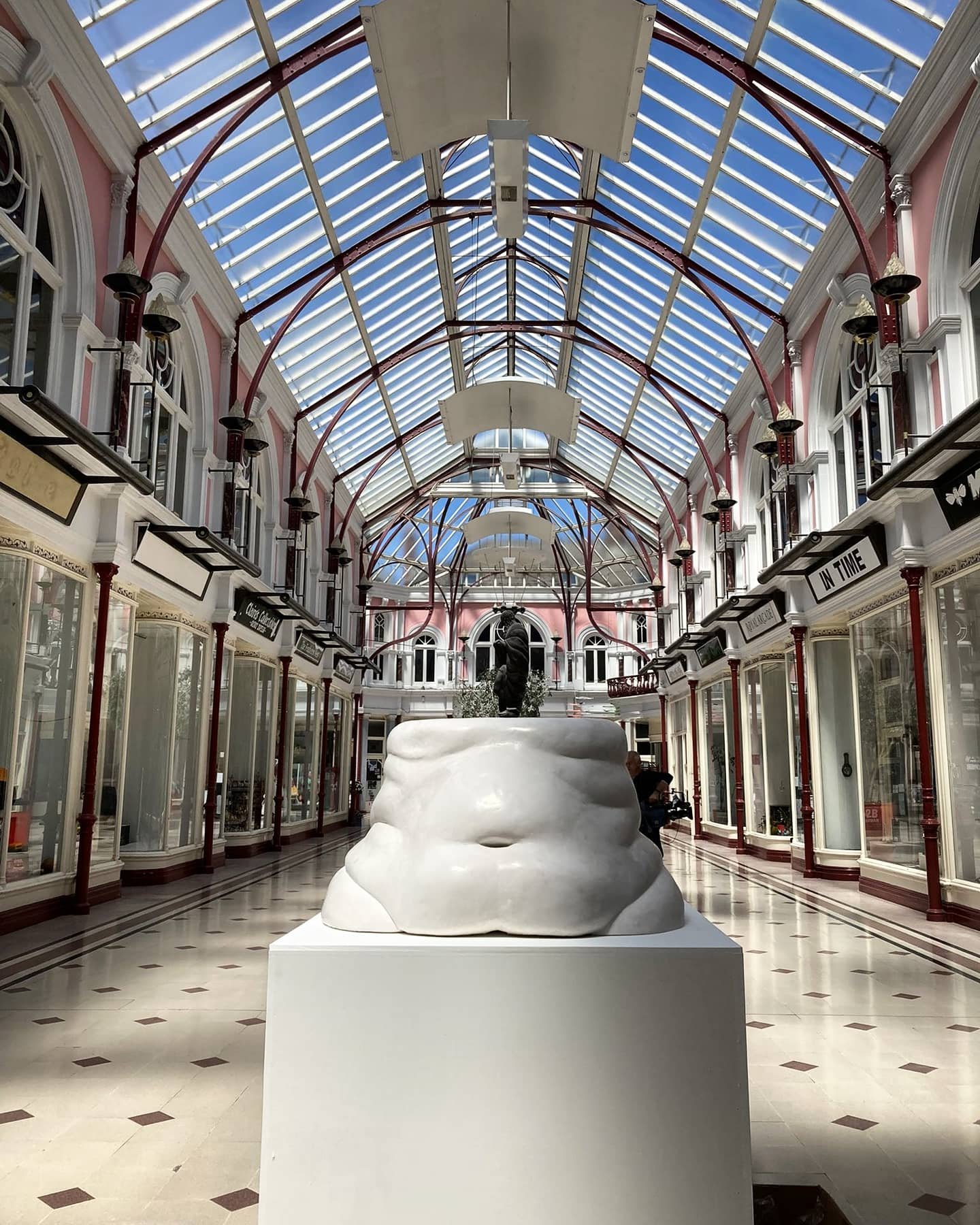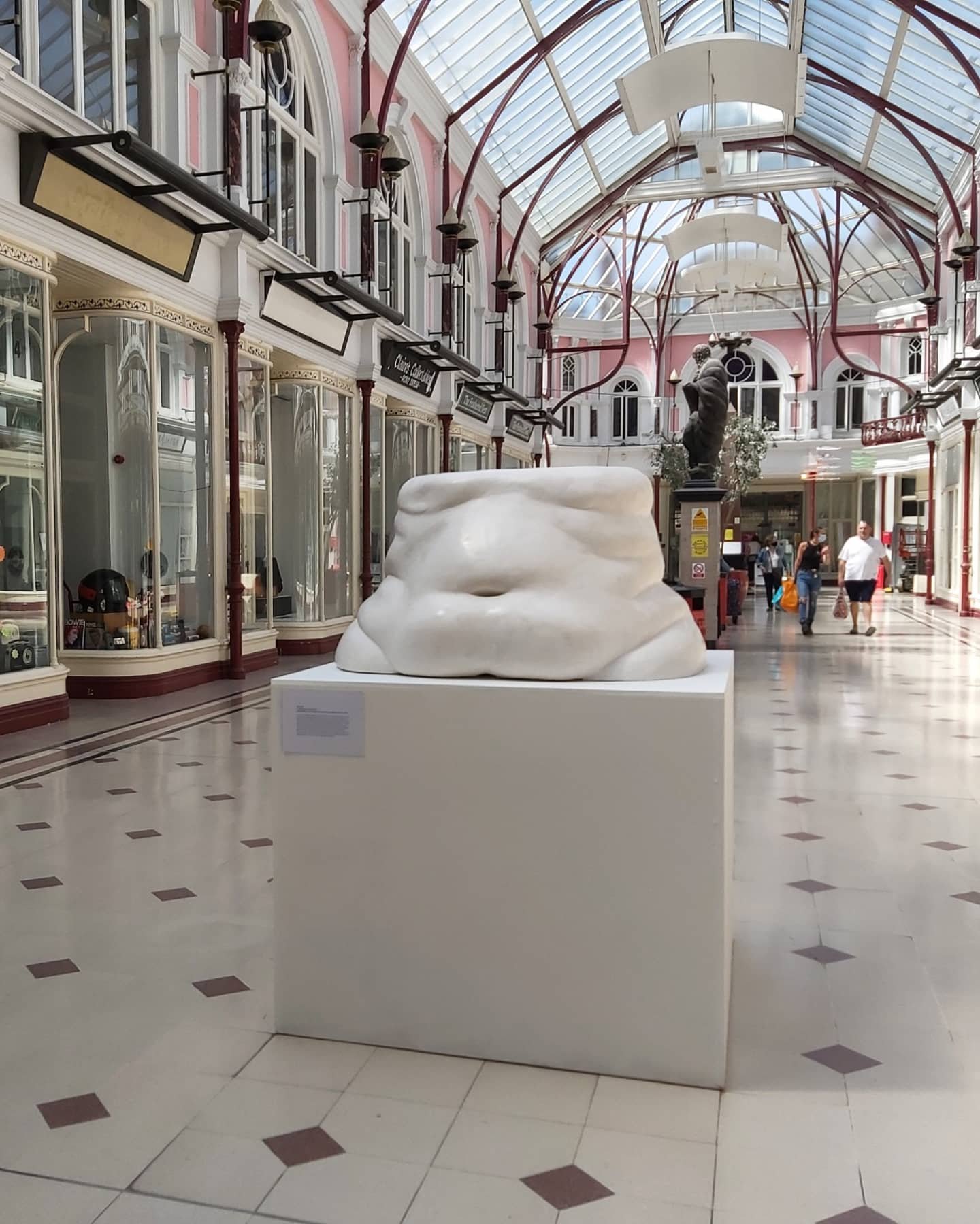How do we respond to fatness? by Leigh Williams
“In my own work, I use sculpture to discuss the relationship we have with our bodies, and how we respond to fatness. I looked toward my own connection with my belly as it has changed dramatically. The hatred I showed to my body was immense, it rotted my relationship with myself. I had to completely repair my identity tied towards my body because it almost felt like it wasn’t mine. I had mistreated it so badly that I was a stranger to it and sculpture was the only way I could rekindle that relationship physically. I sculpt realistically and so I had to take reference photos of myself when making these sculptures. Having to stare at my own rolls and curves gave me that familiarity back, making me relearn the way my body looked and felt so I could recreate it in clay. From then on, I sculpt fat bodies, celebrating the form that I learnt to fall in love with. The fat form is a delight to sculpt, and I want to celebrate it in the way I understand, and for other fat people to see this celebration too.
“I feel that even though every roll of fat is distinctly placed on each fat body, seeing an all-encompassing representation of the fat form could perhaps encourage others to celebrate their own bodies. I named these sculptures ‘Glory’, as fat bodies are glorious to me, to sculpt, to witness but also to exist in. In my portrayal of the fat belly, I do not attempt to control how the audience perceive it but ensure that the way in which my sculpted bodies are posed is comfortable and confident.
“When I make a sculpture, I go into it thinking of a viewer and how they could maybe find a roll or a stretch mark that they want to touch or find beautiful and then find a similar roll of fat on their own body and celebrate their own beauty. I have the need to include a sense of celebration within my work. To celebrate the fat form, almost making up for those years that I lost hating it.
“‘Glory II’ is my most recent sculpture, and largest. It is a representation of the fat belly and back. It has been on display, from my uni’s studio to an arcade which was a bit surreal for me, as it realised my wish for the fat form that I created to be out in the open. For the public to have no choice but to see fatness in the eye, or the belly button.
“The sculpture is so large because I want my art to take up space. I feel as fat people we can sometimes want to make ourselves as small as we can when to me, we should celebrate the breadth of our influence, so whilst some of my work can be held in your palm or too large to reach your arms around, they all carry that unashamed, celebratory joy that I can only wish you take a piece of when you see my work, as to find joy in your body through art is a beautiful thing.”






